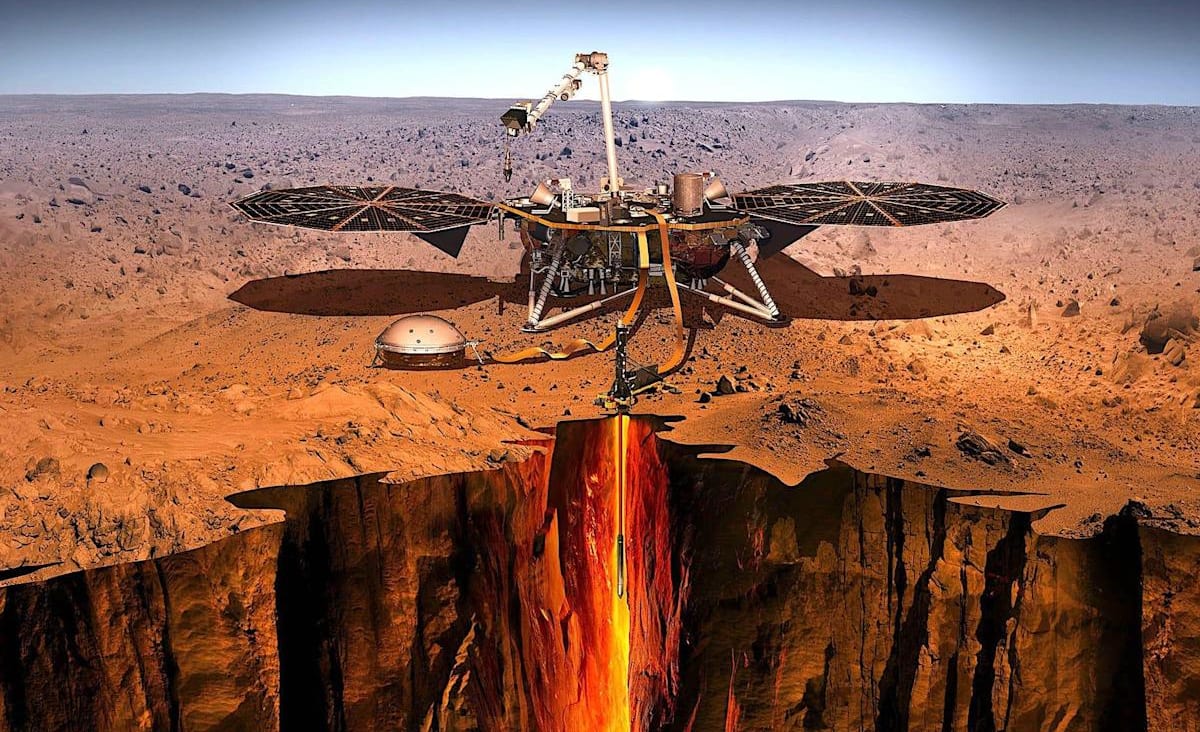
www.yahoo.com
NASA's InSight lander has finally detected 3 big Mars quakes, including one that lasted nearly 90 minutes
On InSight's 1,000th day on Mars, the robot's seismometer detected the big Mars quake that NASA scientists had been waiting for.
Science & Tech
NASA's Insight lander was sitting silently in the empty dust plains of Mars on Saturday, as it had for the past 1,000 Martian days, when the ground began to rumble.
The shaking continued for nearly an hour and a half.
The robot beamed the data from its seismometer back to Earth, and NASA scientists realized they had what they'd been waiting for: a big quake. Insight had recorded a magnitude 4.2 Mars quake - the kind NASA scientists had been wanting to observe since Insight touched down on the red planet in November 2018.
Two other big ones recently rolled through, too: On August 25, the lander felt two quakes of magnitudes 4.2 and 4.1.
Before these, the biggest quake the lander had felt was a 3.7 in 2019.
"It looks like there are fewer large quakes on Mars, relative to the number of small quakes, than we would expect. It's a little bit puzzling," Bruce Banerdt, the principal investigator for InSight, told Insider in April.
But the Saturday quake was five times more energetic than the 3.7-magnitude rumble.
These big quakes offer a missing piece of the Martian puzzle. Scientists can use their seismic waves to learn about the makeup of Mars' core, in the same way the waves of an X-ray or CAT scan are used in the body. Getting more detailed views into Mars' insides can yield clues about how the planet was born and how it has evolved over time. That knowledge could be crucial in astronomers' efforts to find other worlds that might host life.
"By looking at Mars' core and looking at Mars' crust, and understanding that these haven't changed very much in the last 4.5 billion years, we can get a glimpse into what the Earth might have looked like very early on," Banerdt said in April. "Mars is helping us to understand just how rocky planets form and how they evolve in general."
Mars quakes have revealed an Earth-like planet with a moon-like crust
InSight has detected more than 700 quakes in total, and they've revealed a lot about the planet's interior already. Scientists have learned that Mars' crust is thinner than they thought, and that it's more like the moon's crust than Earth's - it's broken up from asteroid impacts.
Because the Martian crust is so dry and broken, its quakes last much longer than earthquakes. They reverberate between cracks in the crust, and there's not as much moisture to absorb them. So the quakes InSight has felt have typically lasted 10 to 40 minutes.
Recently, scientists have also used the quakes to determine that Mars has a molten core. They're not yet sure whether a solid inner core hides beneath a molten outer core, the way it does on Earth.
























































